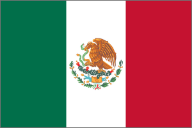As the U.S.’ neighbors in North America, Canada and Mexico are the logical first stops for Wisconsin companies that are new to exporting. The countries share geographic proximity, cultural ties, and a long history of doing business together. Customers in these markets have a high level of trust in U.S.-made products, and the high volume of trading among these countries means potential local partners in these markets are likely to be well versed in handling logistical and regulatory issues that may arise. The North American Free Trade Agreement (NAFTA) that went into force in 1994 eliminated most duties on Wisconsin’s exports into Canada and Mexico. On July 1, 2020, the U.S.-Mexico-Canada Agreement (USMCA) went into effect, with new rules affecting trade of cars and auto parts, new policies on labor and environmental standards, intellectual property protections, digital trade provisions, and rules of origin. The agreement faciltates freer movement of digital products and services and increases access for several categories of dairy products into the Canadian market. The new agreement also has more stringent local content requirements with respect to core automotive parts as well as for textile products. The agreement also will help clarify cross-border e-commerce transactions, providing Wisconsin businesses with opportunities to sell to Canadian customers via their e-commerce platforms.
View detailed country information: Canada, Mexico
 CANADA
CANADA
No two countries are as closely integrated as the U.S. They share the longest international border in the world and their bilateral relationship is one of the world’s closest and most extensive. Over 30 U.S. states, including Wisconsin, count Canada as their largest export market. Nearly $2 billion in bilateral trade and 400,000 people cross the border between the two countries every day. Proximity, ease of doing business, and a common business culture and rule of law contribute to the already significant bilateral trade base and will ensure that tihs market will be receptive to U.S.- and Wisconsin-made goods and services in the coming years. This unique trade and investment relationship is based on an increasingly integrated supply chain; on the co-production of cutting-edge technologies; and on the positive flow of people, talent, and ideas.
Canada’s stable economic performance, mature and sophisticated market, strong acceptance of and familiarity with U.S. products, similar customer base, and solidly integrated supply chain offer excellent business opportunities for Wisconsin exporters with innovative product and service solutions. While many Wisconsin companies focus their attentions on Ontario and Quebec, western Canada—with its growing clean technology sector, strong agriculture sectors and growing ICT, artificial intelligence, and data sciences markets—provides opportunities for Wisconsin companies as well.
Canada and the United States share the world’s longest border— nearly $2 billion of goods and services cross it each day. While trade has been impacted by the COVID-19 pandemic, the Canadian economy is showing significant signs of recovery in several sectors. Canada is Wisconsin’s largest export market with $7 billion in goods exported to Canada annually and a bilateral trade valued of approximately $11.8 billion— Wisconsin exports more than it imports. Wisconsin’s close geographic proximity and the similarity in business cultures make Canada a good first step to your success in exporting. Canada has committed to net zero carbon emissions by 2050 with significant reduction targets by 2030. Opportunities in energy efficiency, carbon capture and battery technologies focused on both industrial and consumer markets presents a significant opportunity for Wisconsin companies.

 MEXICO
MEXICO
With a population of almost 130 million, a rich cultural history and diversity, and abundant natural resources, Mexico is among the 15 largest economies in the world and the second largest economy in Latin America. The country has strong macroeconomic institutions and it is open to trade. Mexico is Wisconsin’s No. 2 export market, following Canada. Mexico’s recovery from the COVID-19 pandemic will rely on several external and domestic factors, including the speed of vaccine deliveries (and the vaccination campaign), U.S. growth dynamics, and private investment.
Mexico’s proximity to the U.S. makes it a logical market for Wisconsin exporters. It is the 11th-most-populous country in the world and is also a relatively young country with a median age of 27. Geographic proximity aside, the USMCA trade agreement gives U.S. exporters an advantage with the reduction of tariffs and the streamlining of other trade barriers such as border processing and licensing requirements for U.S. products coming into Mexico.

WANT TO LEARN MORE?
Reach out to WEDC’s Global Trade and Investment team to learn more about global market intelligence, exporting and more.
The views or opinions expressed here are solely those of the author(s) and do not reflect those of WEDC. WEDC is not responsible for the contents nor does WEDC guarantee the accuracy, completeness, timeliness or reliability of this information.

 CANADA
CANADA MEXICO
MEXICO